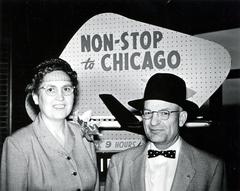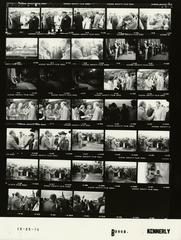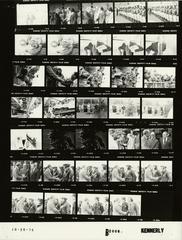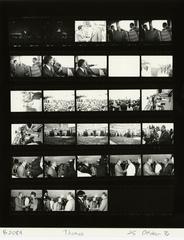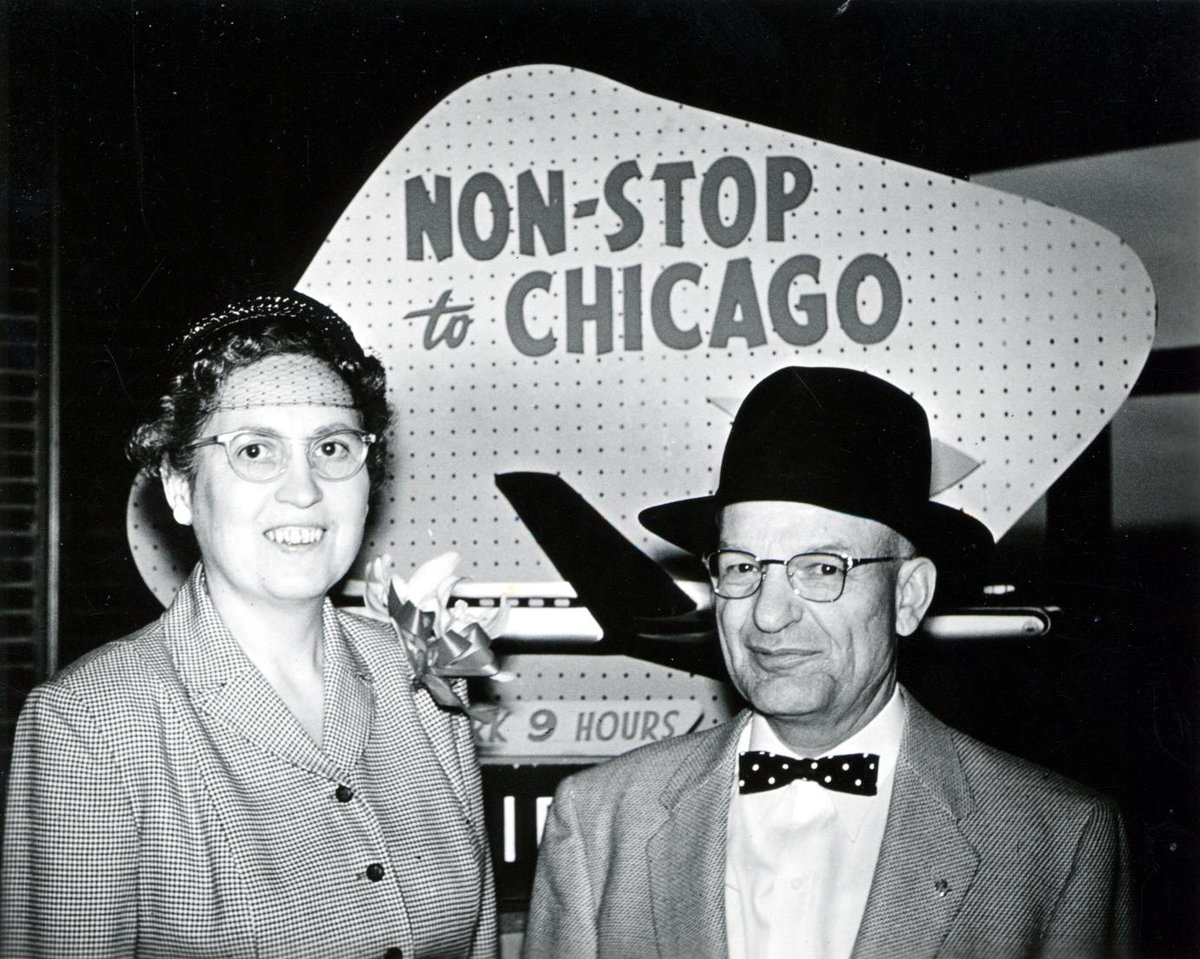
Portland International Airport (PDX) Visitor Guide: Tickets, Hours, and Tips
Date: 14/06/2025
Introduction
Portland International Airport (PDX) is the primary gateway to the Pacific Northwest, recognized for its blend of aviation history, innovative architecture, sustainability, and celebration of Portland’s local culture. Since its opening in 1940 as the Portland-Columbia Super Airport, PDX has grown into Oregon’s largest and busiest airport, connecting millions of travelers to more than 75 domestic and 11 international destinations (OregonLive; Port of Portland).
The airport’s design reflects the Pacific Northwest spirit, featuring natural materials, expansive views of Mount Hood, and groundbreaking sustainability initiatives like the world’s largest mass timber terminal roof. PDX Next, a $2 billion redevelopment project, is currently underway to double passenger capacity by 2045 and further enhance the traveler experience (Architectural Record; STIRworld; urdesignmag).
This guide covers everything you need to know for your visit to PDX: from historical highlights and terminal facilities to transportation, accessibility, local dining, shopping, and nearby attractions.
Table of Contents
- Historical Overview and Architectural Evolution
- Visitor Information: Planning Your Trip
- PDX Next: The Future of Portland International Airport
- Nearby Historical Sites and Attractions
- Frequently Asked Questions (FAQs)
- Terminal Layout, Amenities, and Accessibility
- Ground Transportation and Parking
- Sustainability Initiatives
- Essential Visitor Tips
- Summary and Final Tips
- References
Historical Overview and Architectural Evolution
Early Aviation and the Birth of PDX
Portland’s aviation history began in the early 20th century with multiple small airfields, highlighted by Silas Christofferson’s rooftop flight in 1912 (OregonLive). By 1940, the city established the Portland-Columbia Super Airport, designed to handle larger aircraft and increased passenger numbers. It quickly became the region’s primary aviation hub.
Postwar Growth and The Jet Age
Following World War II, passenger demand soared. The airport was renamed Portland International Airport (PDX) in the 1950s and underwent major expansions, including extended runways and enlarged terminal facilities (OregonLive).
Architectural Identity
PDX’s architecture celebrates the natural beauty of the Pacific Northwest, with terminal designs incorporating local timber and panoramic views of Mount Hood (Architectural Record). The airport pioneered the concept of a locavore shopping and dining experience, introducing the “Oregon Market” and ensuring that nearly all concessions are locally owned.
Continuous Modernization
Since 1965, ZGF Architects has led PDX’s evolution, transforming it into a complex of interconnected structures while maintaining the region’s distinctive character (STIRworld).
The Iconic PDX Carpet
The geometric teal-and-purple PDX carpet, introduced in the late 1980s, became a local icon. Its unique pattern has been celebrated and recently reintroduced during renovations (Going.com; Airport Industry News).
Visitor Information: Planning Your Trip
Hours of Operation
PDX operates 24/7. Shops, restaurants, and airline counters have varying hours, so check ahead for your specific needs (PDX Travel Tips).
Tickets and Airlines
Tickets can be purchased via airline websites, travel agents, or online platforms. For best fares, book early and compare sources.
Accessibility
PDX is fully ADA compliant, offering wheelchair assistance, all-user restrooms, accessible signage, and digital navigation tools (PDX Accessibility).
Dining, Shopping, and Amenities
Enjoy local cuisine, coffee, books from Powell’s, and Portland-centric shopping options. Art installations and comfortable lounges abound (iFly; AirportAssist).
PDX Next: The Future of Portland International Airport
Vision and Sustainable Design
PDX Next is a $2 billion redevelopment aiming to double capacity by 2045 with a focus on sustainability, flexibility, and traveler experience (urdesignmag).
World’s Largest Mass Timber Terminal Roof
The new terminal’s nine-acre mass timber roof—crafted from local, sustainable forests—is the world’s largest, designed to evoke a Pacific Northwest forest and reduce energy use (STIRworld; Port of Portland).
Enhanced Accessibility and Experience
Improvements include open adaptable spaces, improved wayfinding, all-user restrooms, expanded shopping and dining, new lounges, and art installations. Completion is expected in 2026 (Future Travel Experience; PDX Next).
Nearby Historical Sites and Attractions
Extend your visit by exploring the Columbia River Gorge, Fort Vancouver, Portland Japanese Garden, and Old Town Chinatown—each offering a unique glimpse into the region’s heritage (PDX Next).
Frequently Asked Questions (FAQs)
Q: What are PDX’s visiting hours?
A: The airport is open 24/7; ticketing counters and shops have specific hours—check in advance.
Q: How do I purchase tickets?
A: Through airline websites, travel agencies, or at the airport.
Q: Is PDX accessible for travelers with disabilities?
A: Yes, with comprehensive accessibility services including wheelchair assistance and digital navigation.
Q: What ground transportation is available?
A: TriMet MAX light rail, taxis, rideshares, shuttles, and car rentals.
Q: Are there tours or special events?
A: PDX occasionally hosts events and art exhibitions—check the airport’s website for updates.
Terminal Layout, Amenities, and Accessibility
Terminal Structure
PDX features a single terminal divided into Concourses B, C, D, and E, allowing easy movement between gates and amenities without the need for shuttles (iFly).
- Concourse B: Regional/domestic flights.
- Concourse C: Major airlines and amenities.
- Concourse D: Food court and retail.
- Concourse E: Domestic and select international flights.
Amenities
- Dining: Stumptown Coffee, local restaurants, food courts (iFly).
- Shopping: Portland-themed stores, Powell’s Books, local gifts (AirportAssist).
- Art & Relaxation: Rotating exhibits, quiet zones, and charging stations.
- Family Facilities: Play areas and nursing rooms.
- Lounges: Airline and independent lounges with business amenities.
- Connectivity: Free high-speed Wi-Fi, visual paging, and information screens (AmtrakStation).
Accessibility
- Wheelchair Assistance: From curbside to gate, request in advance (PDX Accessibility).
- Restrooms: Fully accessible, including family and all-user options.
- Digital Navigation: GoodMaps app for audio-visual guidance (PDX Newsroom).
- Parking & Ground Transportation: Discounted accessible parking, accessible taxis/rideshares, and TriMet MAX Red Line (PDX Travel Tips).
- Assistance: Staff and volunteers in blue uniforms are available throughout the terminal.
Tip: Notify your airline ahead of time for special assistance and allow extra time during construction.
Ground Transportation and Parking
Public Transit
The TriMet MAX Light Rail Red Line offers direct service between PDX and downtown Portland, with trains every 15 minutes (PDX Travel Tips). Tickets are available at station kiosks, and the journey takes about 40 minutes.
Shuttle, Taxi, and Rideshare Services
Taxis, limousines, and authorized rideshares (Uber, Lyft, Wingz) operate from designated pickup zones near baggage claim. Many hotels offer courtesy shuttles—confirm with your hotel before arrival.
Rental Cars
Eight rental car companies (five on-site) are located in the short-term garage, accessible via walkways from the terminal.
Parking Facilities
- Short-Term Garage: $4/hour, $24/day, adjacent to the terminal.
- Long-Term Garage: Similar rates, slightly further walk.
- Economy Lot: $15/day, with frequent free shuttles; seventh day free.
- Valet Parking: $10/hour, $45/day, EV charging available.
- Disabled Parking: Discounted ADA spaces in all lots.
- Cell Phone Waiting Area: Free for up to 30 minutes.
- Bike/Motorcycle Parking: Free in the short-term garage.
- Reservations: Online advance reservations recommended during peak times.
Sustainability Initiatives
PDX is a leader in green airport design and operations:
- Mass Timber Terminal: Locally sourced, earthquake-resilient timber structure.
- Energy & Air Quality: Programs to reduce emissions, promote public transport, and improve air quality.
- Sustainable Aviation Fuel: Founding sponsor of Sustainable Aviation Fuels Northwest.
- Recycling & Green Spaces: Extensive recycling and indoor greenery.
- Support for Local Artists: Rotating exhibitions and a dedicated gallery space (STIRworld).
Essential Visitor Tips
- Arrive Early: Especially during construction or peak travel times.
- Use Digital Tools: Interactive maps and GoodMaps app for navigation.
- Check Airline Counter Locations: Recent changes may affect check-in procedures.
- Travel Light: Keep essentials handy for security screening.
- Ask for Help: Staff and volunteers are eager to assist.
Summary and Final Tips
Portland International Airport (PDX) is a model for sustainable, accessible, and culturally rich airport design. With its seamless transportation links, local amenities, and ongoing upgrades, PDX ensures a convenient and memorable travel experience. For the latest travel tips, terminal maps, and updates, download the Audiala app and follow PDX on social media.
Safe travels and enjoy your journey through the Pacific Northwest’s premier airport!
References
- This article is based on information and updates from authoritative sources, including OregonLive (OregonLive), Architectural Record (Architectural Record), STIRworld (STIRworld), urdesignmag (urdesignmag), Port of Portland (PDX Accessibility; PDX Travel Tips), iFly (iFly), AirportAssist (AirportAssist), Airport Industry News (Airport Industry News), PDX Next (PDX Next), AmtrakStation (AmtrakStation), and Audiala (Audiala).
